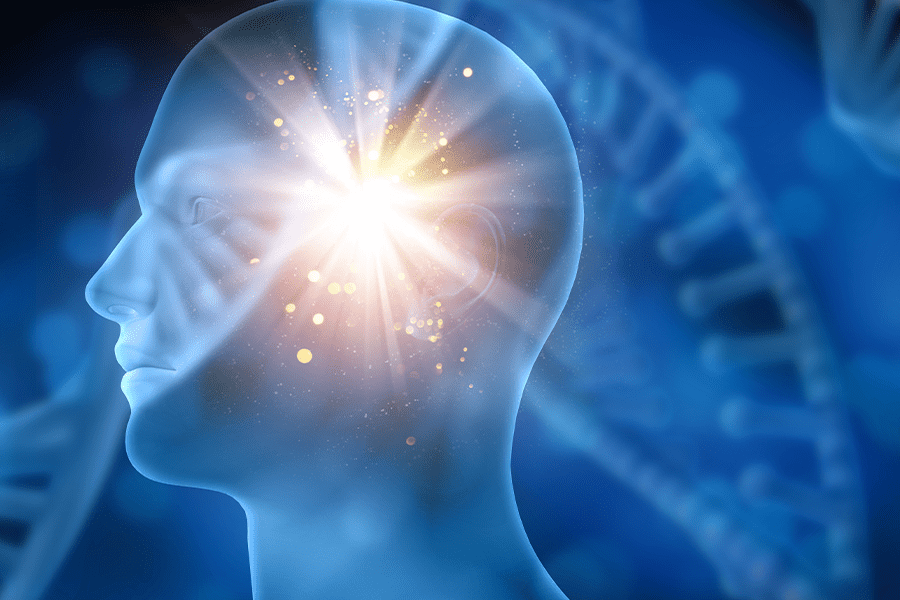 What is deep brain stimulation?
What is deep brain stimulation?- Who can benefit from deep brain stimulation?
- How effective is DBS?
- Can deep brain stimulation alleviate other diseases?
- What are the pros and cons of deep brain stimulation?
- Am I a candidate for deep brain stimulation surgery?
More than 160,000 patients from across the globe have already benefited from a surgical procedure known as deep brain stimulation. The procedure can help identify and correct neurological issues that cause movement disorders. If you have Parkinson’s or suffer from epilepsy, deep brain stimulation can relieve the tremors that negatively impact your ability to perform everyday tasks.
The techniques doctors use for deep brain stimulation are advancing quickly, as is our understanding of the human brain. Both of these trends make deep brain stimulation a promising treatment for tremors and other neurological issues that make it difficult for many people to function.
Let’s review what we know about deep brain stimulation. What is it? Can it help you get your life back?
What is Deep Brain Stimulation?
Deep brain stimulation, or DBS, is a surgical procedure that physicians use to implant tiny electrodes into the grooves and folds of the brain. These electrodes are powered by a small computerized generator that is inserted under the skin of the upper chest.
The technology behind this revolutionary treatment consists of:
- An electrode–a small, insulated wire that is inserted through a burr hole in the skull and implanted inside your brain
- An extension wire runs from the electrode through the skull and under the skin on your neck and shoulders, connecting to the generator on your chest
- An internal pulse generator, or IPB, powers the electrical stimulation in the brain
Think of your brain as an expansive communication network. It communicates by sending electrical signals through a system of neurons. These tiny cells communicate through chemical and electrical signals that we have yet to fully understand. When you experience the symptoms of a neurological movement condition such as Parkinson’s Disease, it’s because some of the neurons in your brain have slowed down or stopped working. In these moments, the brain essentially misfires and fails to send the signals that control your body’s movements. Deep brain stimulation employs an artificial electrical current to recreate these signals, which helps simulate normal muscle behavior and can even be used to control the compulsions of obsessive-compulsive disorder, as well as the symptoms of other illnesses.
What Patients Can Benefit from Deep Brain Stimulation?
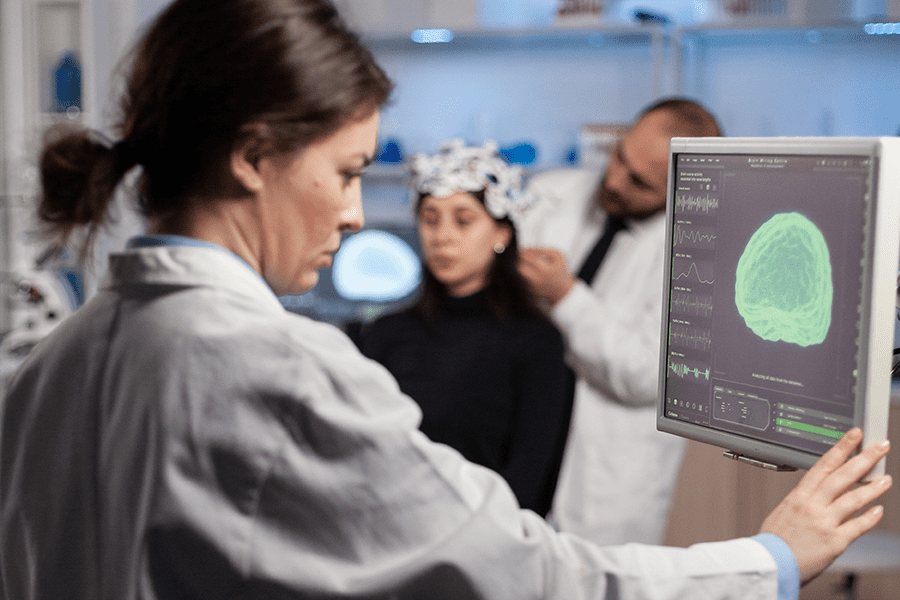 Deep brain stimulation is successfully used to treat neuromuscular conditions affecting bodily movement. These conditions include:
Deep brain stimulation is successfully used to treat neuromuscular conditions affecting bodily movement. These conditions include:
- Dystonia, a movement disorder that causes involuntary twitching
- Epilepsy, which causes seizures and other abnormal behavior
- Essential Tremor, which creates involuntary shaking in the hands and arms
- Obsessive-Compulsive Disorder, a chronic condition that causes repeating involuntary behaviors and thoughts
- Parkinson’s Disease, a degenerative brain disorder that affects motor functions
While we may not completely understand these conditions or what causes them, we know that their symptoms result from the misfiring of electrical signals inside the brain. By disrupting these signals, deep brain stimulation can alleviate the neurological symptoms of many of these illnesses.
How Effective Is DBS?
Deep brain stimulation is highly effective at treating some movement disorders. One study followed up with patients ten years after their treatment and found that 72.5% of cases showed a reduction in tremors. Of these patients, 92% were satisfied with the treatment and said they would recommend it to others. The study concluded, “While DBS does not halt disease progression…it provides durable, symptomatic relief.” A website on Parkinson’s Disease suggests deep brain stimulation “has replaced other hallmark procedures when it comes to treating PD symptoms.”
Can Deep Brain Stimulation Alleviate Other Diseases?
Several ongoing clinical trials indicate that deep brain stimulation may be helpful as a treatment for other illnesses. In 2020, there were 384 research projects across 28 different health disorders, with 40% of these studies focusing on movement disorders. Scientists are considering using DBS for everything from post-traumatic stress to schizophrenia. Here are several current areas of DBS research:
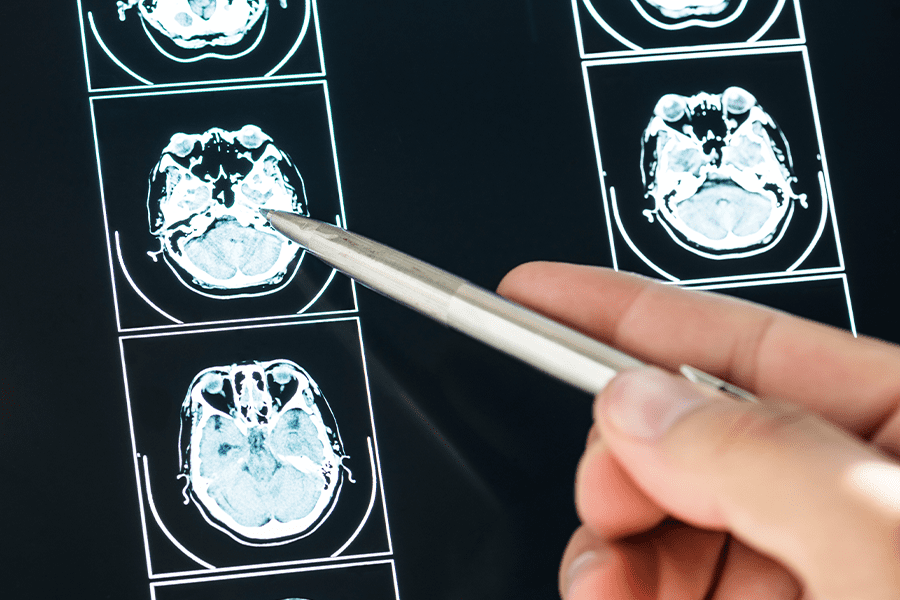 Alcohol and drug addiction
Alcohol and drug addiction- Alzheimer’s disease
- Anorexia nervosa (eating disorders)
- Bipolar disorder
- Chronic headaches
- Coma
- Dystonia
- Epilepsy
- Huntington’s disease
- Major depressive disorder
- Memory loss
- Mixed movement disorder
- Multiple sclerosis
- Obesity
- Obsessive-compulsive disorder
- Pain
- Parkinson’s disease
- Post-traumatic stress disorder
- Schizophrenia
- Spinal injury
- Stroke
- Tinnitus
- Tourette’s syndrome
- Tremor
- Traumatic brain injury
Could these conditions someday be cured by employing electrical signals to rewire the brain? While that remains to be seen, we know that DBS is a highly effective and low-risk treatment that can help many patients take control of the neurological conditions that plague them. Like any surgery, deep brain stimulation is not without its risks.
What Are the Pros and Cons of Deep Brain Stimulation?
The benefits of DBS include:
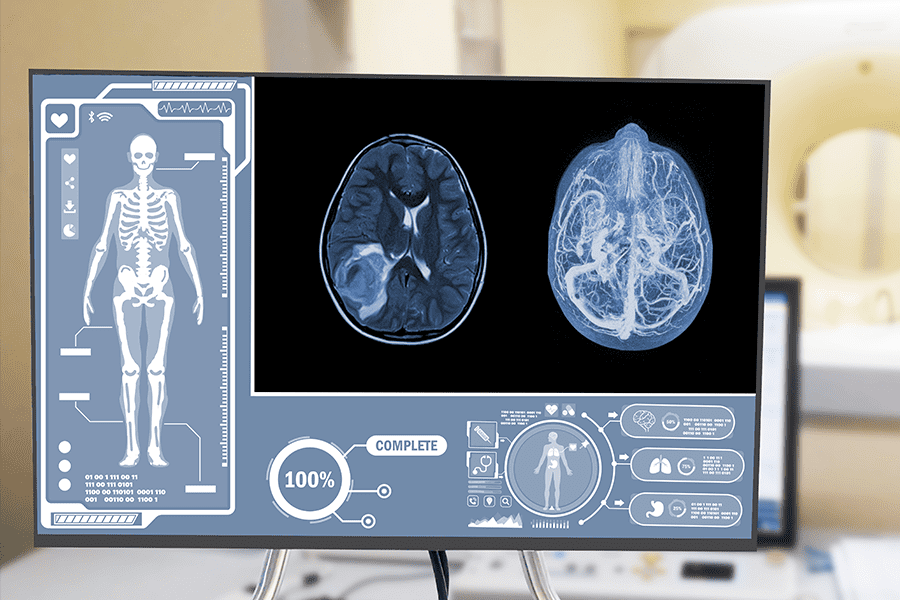 An almost immediate reduction (in some patients) of motor symptoms such as tremors, stiffness, and slowness
An almost immediate reduction (in some patients) of motor symptoms such as tremors, stiffness, and slowness- It is a non-invasive surgery that does not remove nerve cells or damage your brain
- It can reduce the need for medications that control tremors
- It is a highly individualized treatment–doctors tailor the treatment to each patient’s brain, adjusting the pulse of the electrodes and stimulation frequency to match their symptoms
The risks of undergoing deep brain stimulation surgery include:
- Danger when interacting with other electronic devices such as an MRI
- For some patients, the treatment can take months for the full benefits to kick in
- Issues relating to hardware or battery malfunction, or the shifting of electrodes
- The procedure can be expensive and not all insurances may cover it
- It may affect other parts of the brain and cause unwanted neurological symptoms
- Surgical side effects can include bleeding, fluid buildup, infection, or stroke
Before doctors perform deep brain stimulation treatment, patients undergo multiple imaging scans and lab tests to ensure the safety and effectiveness of the procedure. During this process, your doctor will work with you and your loved ones to determine if DBS is likely to improve your symptoms.
Am I a Candidate for Deep Brain Stimulation Surgery?
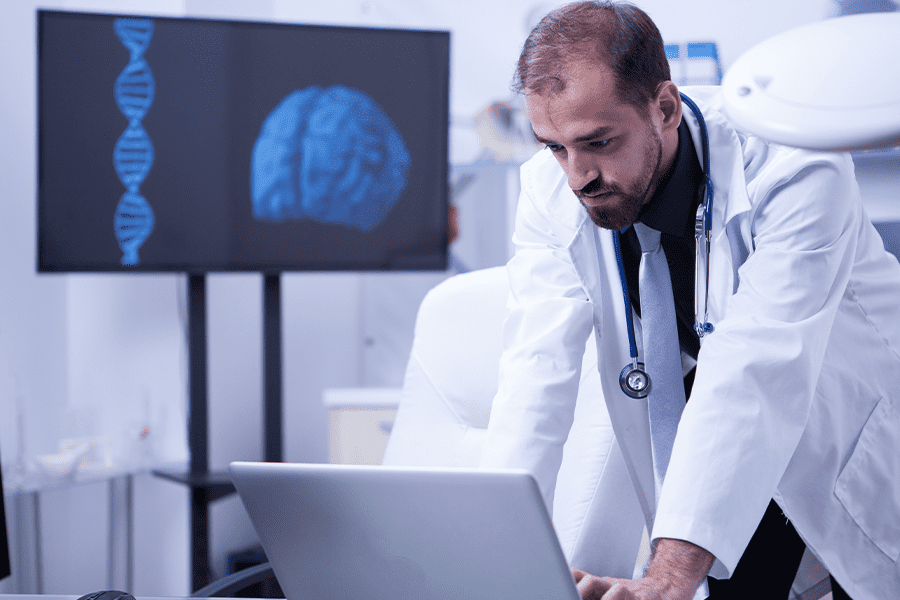 Approximately 12,000 DBS procedures occur in the United States each year. If you’ve been diagnosed with a tremor disorder or a mental health condition that can be treated with DBS, the first step to getting treatment is to reach out to a neurosurgical team for a consultation. During the consultation, doctors will carefully evaluate your condition and speak with you about your options if they believe you are a good candidate for the treatment.
Approximately 12,000 DBS procedures occur in the United States each year. If you’ve been diagnosed with a tremor disorder or a mental health condition that can be treated with DBS, the first step to getting treatment is to reach out to a neurosurgical team for a consultation. During the consultation, doctors will carefully evaluate your condition and speak with you about your options if they believe you are a good candidate for the treatment.
Orlando Neurosurgery is standing by to help you overcome your neurological illnesses and injuries. Get to know our team to find out more about the revolutionary procedures that can help you heal.
Sign Up for Our Newsletter
Get the latest news and updates from Orlando Neurosurgery delivered straight to your inbox.


